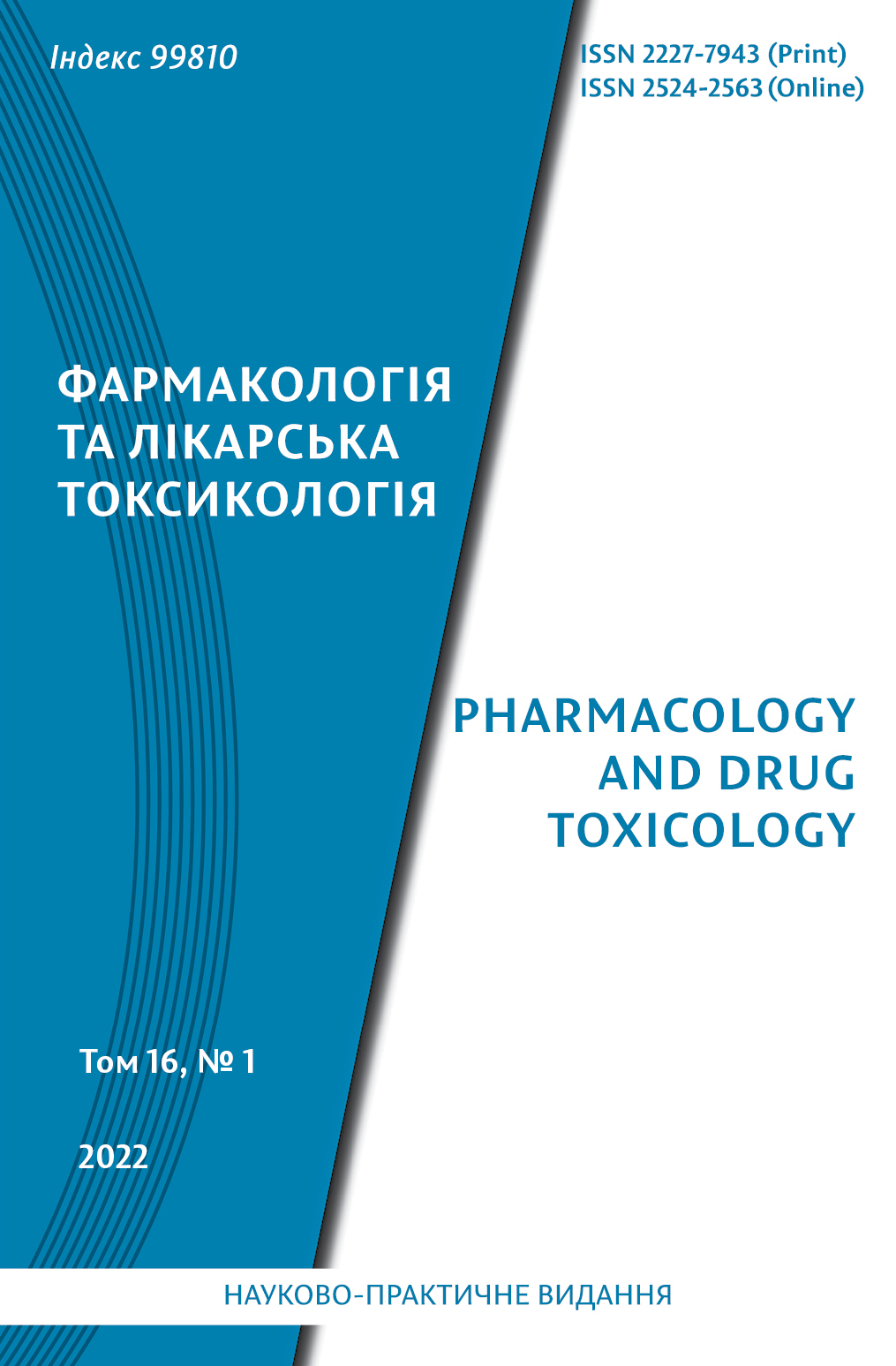Abstract
The aim of the study – to research the effectiveness of a potential anticonvulsant 5-[(Z)-(4-nitrobenzylidene)]-2-(thiazol-2-ylimino)-4-thiazolidinone (Les-6222) on the pentylenetetrazole kindling model in mice and determine its effect on the content of neurotransmitter amino acids (GABA, glycine, glutamate,
aspartate).
The study was performed on 33 white non-linear mice on a pentylenetetrazole kindling model that reproduces chronic epileptogenesis. Pentylenetetrazole at a dose of 30 mg/kg was administered intraperitoneally for 16 days. The test compound Les-6222 was administered at a dose of 100 mg/kg intragastrically (i. g.). Sodium valproate (300 mg/kg i. g.) and celecoxib (4 mg/kg i. g.) were used as reference drugs. The dynamic of the course of convulsions was observed. On the 16th day the brains were removed and frozen in liquid nitrogen. The content of neurotransmitter amino acids in the brain homogenate was determined by high voltage electrophoresis (GABA, glutamate, aspartate) and thin-layer chromatography on Silufol plates (glycine).
5-[(Z)-(4-nitrobenzylidene)]-2-(thiazol-2-ylimino)-4-thiazolidinone showed high (at the level of sodium valproate) anticonvulsant activity, determined by a statistically significant decrease in the number of animals with seizures from 8 to 16 days of the experiment (p < 0.05) and a statistically significant decrease in
the number of days without paroxysms in animals (p < 0.05). Compared to the control pathology group, the percentage of animals with seizures during the experiment was 22.54 % less (p < 0.05). Celecoxib had no anticonvulsant effect. In the brain of mice of the control pathology group, the content of inhibitory
(GABA, glycine) amino acids significantly decreased and the level of excitatory (glutamate, aspartate) neurotransmitters increased. 5-[(Z)-(4-itrobenzylidene)]-2-(thiazol-2-ylimino)-4-thiazolidinone significantly reduced the elevated glutamate content by 16.26 % (p < 0.01), and also tendentiously reduced the
level aspartate and increased the content of GABA, but not glycine. This distinguishes the mechanism of action of the studied compound from sodium valproate, which contributed to the normalization of the content of all the studied amino acids.
The promising anticonvulsant 5-[(Z)-(4-nitrobenzylidene)]-2-(thiazol-2-ylimino)-4-thiazolidinone in a model of chronic epileptogenesis (pentylenetetrazole kindling) on mice showed a pronounced anticonvulsant effect, which is maybe realized by a significant decrease in the cerebral glutamate content.
